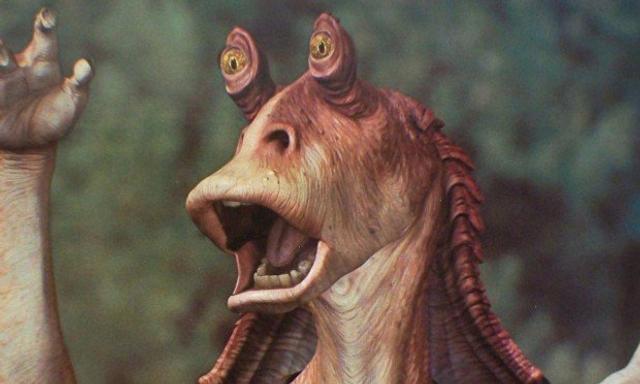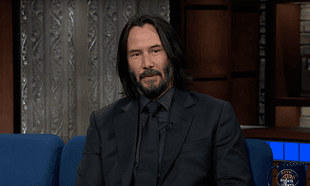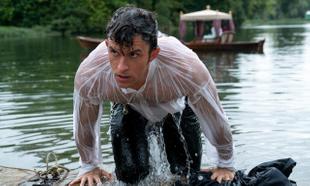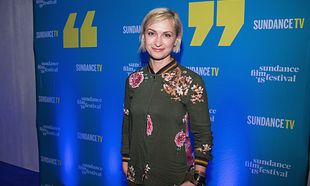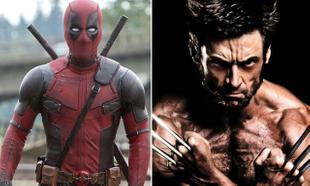In Defence Of... is a series of articles where we'll step in and try defend - operative word is 'try' - films that have been unduly lambasted and unceremoniously dumped by critics and audiences alike. This week we take on one of the most reviled films of the past twenty years - 'The Phantom Menace', starring Ewan McGregor, Liam Neeson and a Gungan called Jar Jar Binks.
When George Lucas was creating 'Star Wars' back in 1977, he was mostly known for a heady sci-fi drama called 'THX 1138'. And a teen comedy called 'American Graffiti'. In an interview with American Film just a month before its release, Lucas explained that Star Wars was aimed at a much younger audience. "Fox hates for me to say this, but 'Star Wars' has always been intended as a young people's movie. While I set the audience for 'Graffiti' at sixteen to eighteen, I set this one at fourteen and maybe even younger than that". That was 1977. He didn't know then that 'Star Wars' would go on to effectively define the term Summer Blockbuster, along with fellow wunderkind Steven Spielberg and 'Jaws'.
There's any number of complaints that are so often laid on 'The Phantom Menace's doorstep. It's too cutesy. The pacing is all wrong. The editing is terrible, and it's because Lucas didn't use his wife to edit the film. Darth Maul was killed too easily. It's too cheesy. All of these may be accurate, but there is no denying that 'The Phantom Menace' was the subject of a critical dogpile that's carried on for the past eighteen years. You only need to say 'prequels' to a hardened 'Star Wars' fan and they'll give you a laundry list of reasons why they're all terrible and that the best George Lucas ever did was handing off the series to other directors.
Again, these have all been worn out to the point that it's a cliche. Despite what people might think, George Lucas probably wasn't interested in the money when he made 'The Phantom Menace'. Even before he sold Lucasfilm to Disney, Lucas was a very, very rich man. The merchandising opportunities he took from the 'Star Wars' trilogy made him a fortune. The 'Indiana Jones' trilogy were also extremely profitable, and Skywalker Sound, Lucasfilm and LucasArts were all performing exceptionally well. Lucas went back to 'Star Wars' in 1999 because he wanted to see if he could become interested in filmmaking again. What better way than by returning to the galaxy he created?
'The Phantom Menace's excessive use of bureaucracy and technical mumbo-jumbo does make for some glacially slow scenes. Very often, it doesn't have any bearing on the larger story. Midichlorians, for example. Taxation of trade routes. Who cares, really? George Lucas does, because by the time 'The Phantom Menace' hit the screens, an entire Expanded Universe had sprung up in his absence. It had taken 'Star Wars' off in completely different directions. Stories set years after the events of 'Return of the Jedi' existed. Others took place millions of years before the original trilogy and there were even stories between the films themselves. Sure, these may have had Lucas' blessing. But there's no way that he had any knowledge of them beyond the fact they were out.
With 'The Phantom Menace', Lucas was trying to assert his control over the property that he created. HE probably took some of his cues from the Expanded Universe as well. You only need to read a book like Timothy Zahn's 'Heir To The Empire' or 'Jedi Search' by Kevin J. Anderson to see that fans wanted heavy, dense swathes of information on what the 'Star Wars' universe looked like. There were encyclopedias, compendiums and every kind of information resources written for fans. Lucas was probably responding to that trend by layering the script with useless exposition.
At the same time, making cutesy characters like Jar Jar Binks, the Gungans, and casting a child actor to play the young Anakin Skywalker was Lucas using the same blueprint he'd worked with on the original trilogy. He was making a film for kids, not for the older generation who'd grown up with 'Star Wars'. In fact, people who grew up with the prequel trilogy - now in their early 20s and so on - have a much more positive view of them than those who watched the original trilogy back in the '70s and '80s.
The design work that went into the film was second to none. The beautifully realised vistas of Naboo, the expertly staged podrace that makes up most of the second act of the film. Even the final battle between Liam Neeson, Ewan McGregor and Ray Park. They all show that Lucas could still make some thrilling popcorn cinema. A double-bladed lightsaber? Who didn't think that was cool? Darth Maul was a terrifying villain, all Satanic horns and ferocity. But you can't have a kid-friendly blockbuster without the villain dying at the end? Not only that, he managed to beat Liam Neeson, too. For all the griping about its clunky and unconvincing dialogue, A New Hope had plenty to go around. So to did 'The Empire Strikes Back', 'Return of the Jedi', and 'The Force Awakens'. Clunky dialogue goes with the territory, really.
It certainly isn't the best in the series, and it has a lot of problems. But 'The Phantom Menace' has more than enough qualities that deserve a reappraisal.
